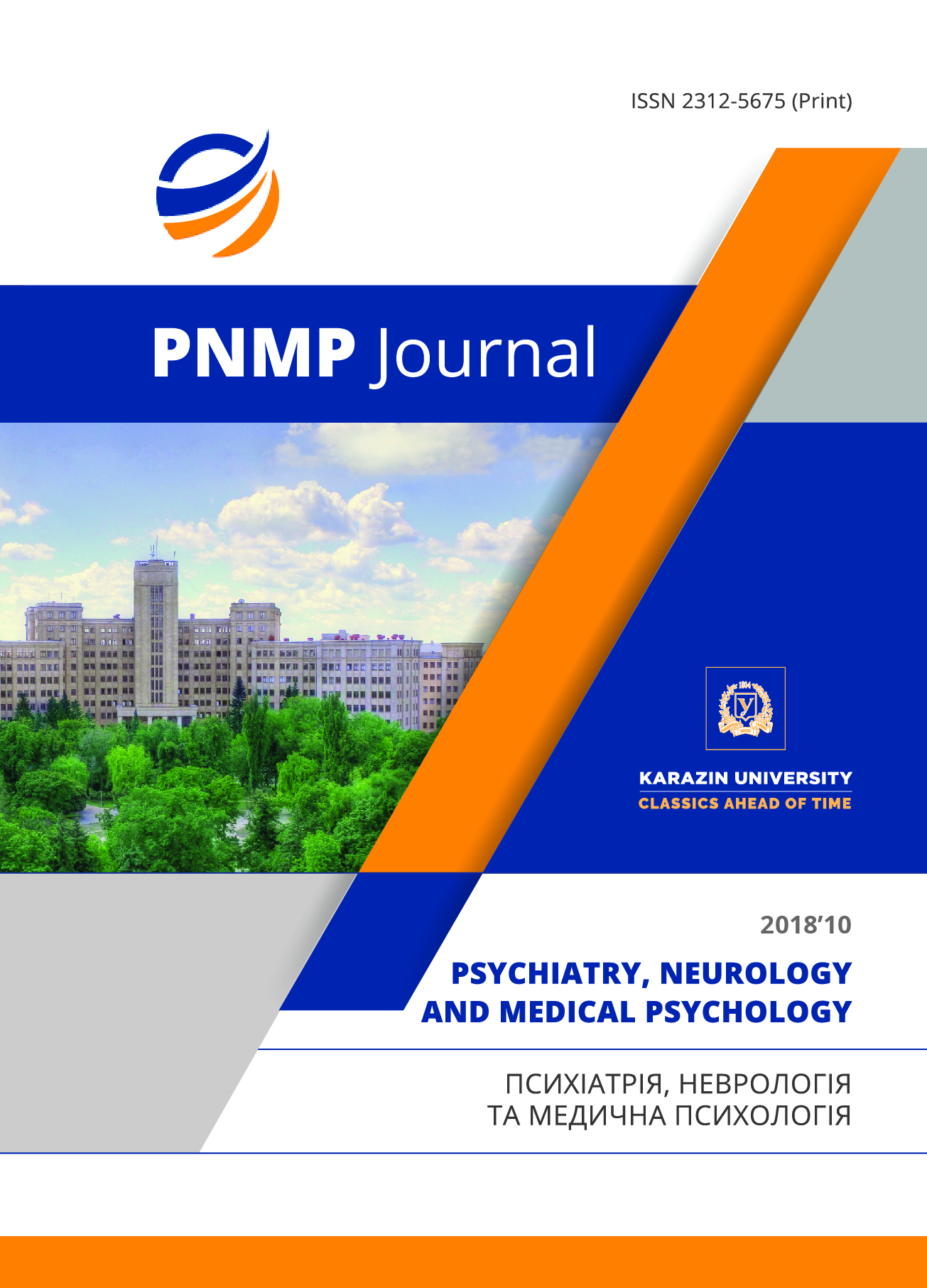Structural and dynamic features of psychopathological disorders of infectious genesis in individuals with exogenous-organic burden
Abstract
In order to establish the psychopathological features of the mental response to an infectious pathology in patients with exogenous-organic complications in the history and understanding of syndromotoxis with comorbid involvement of these registers of mental damage, we examined 144 patients with acute respiratory infections of the upper respiratory tract (acute rhinitis, acute sinusitis, acute pharyngitis, acute laryngitis, acute tonsillitis) - J00-J06 and acute respiratory infections of the lower respiratory tract (bronchitis) - J20 according to ICD-10. Patients were divided into two groups according to exogenous-organic burden according to anamnestic data. The study group included 44 patients with the above infectious pathology, who in the past suffered a traumatic brain injury. The comparison group included 100 patients with the above infectious diseases, who did not have exogenous-organic burden according to anamnestic information. In the study, clinical, anamnestic, psychopathological, psychodiagnostic, follow-up, statistical research methods were used. The study showed a qualitative and quantitative difference in psychopathological symptoms in patients with acute respiratory infections of the upper and lower respiratory tract and with an exogenous-organic burden in history and without it. It became possible to distinguish five types of psyche responses in patients with exogenous-organic burden in the anamnesis with acute respiratory infections of the upper and lower respiratory tract: astheno-depressive, astheno-deficient, explosivedysphoric, explosive-demonstrative, explosive-hypochondriac. The prevailing types were with an explosive arrangement, which was significantly different from those without exogenous-organic burden. The revealed features allow us to expand the understanding of syndromotoxis in the psychopathological comorbidity of infectious and exogenousorganic genesis, improve the quality of differential diagnosis and establish the points of psychocorrectional influence.
Downloads
References
Azouvi P. Neuropsychology of traumatic brain injury: An expert overview / P. Azouvi, A. Arnould, E. Dromer, C. Vallat-Azouvi // Rev Neurol. (Paris). 2017. – №173(7-8). – Р. 461–472.
Hale A. C. Traumatic Brain Injury in the General Population: Incidence, Mental Health Comorbidity, and Functional Impact / A. C. Hale, K. M. Bohnert, R. Grekin, R. K. Sripada // J. Nerv. Ment. Dis. – 2019. – №207(1). – Р. 38–42.
Eshel I. Rehabilitation of Cognitive Dysfunction Following Traumatic Brain Injury / I. Eshel, A. O. Bowles, M. R. Ray // Phys. Med. Rehabil. Clin. N. Am. – 2019. – №30(1). – Р. 189–206.
Orlovska S. Association of Streptococcal Throat Infection With Mental Disorders: Testing Key Aspects of the PANDAS Hypothesis in a Nationwide Study / S. Orlovska, C. H. Vestergaard, B. H. Bech, M. Nordentoft, M. Vestergaard, M. E. Benros // JAMA Psychiatry. – 2017. – №74(7). – Р. 740-746.
Antón Jiménez M. Disorders associated with mild cognitive impairment. Risk factors and predictors / M. Antón Jiménez, J. L. González Guerrero// Rev. Esp. Geriatr. Gerontol. – 2017. – №1. – Р. 20–23.
Brainstorm Consortium. Analysis of shared heritability in common disorders of the brain / Brainstorm Consortium, V. Anttila, B. Bulik-Sullivan, H. K. Finucane et al. // Science. – 2018. – №360(6395). pii: eaap8757. doi: 10.1126/science.aap8757.
References
Azouvi P., Arnould A., Dromer E., Vallat-Azouvi C. Neuropsychology of traumatic brain injury: An expert overview. Rev Neurol. (Paris). 2017, no. 173(7-8), p. 461- 472.

